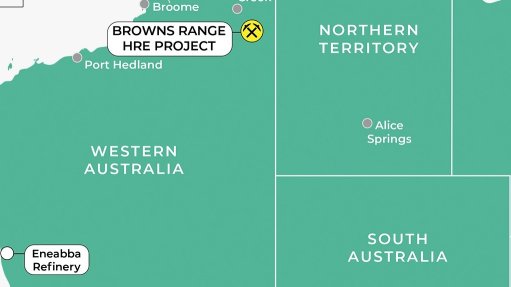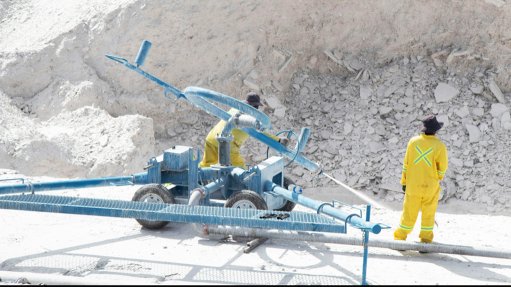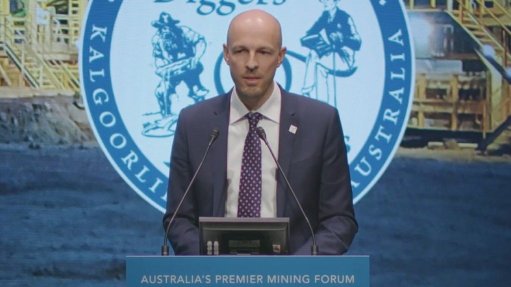Africa gains traction as trade destination


MAKING PROGRESS Several industries and factors are driving growth in sub-Saharan Africa, including agricultural development and power
Photo by Creamer Media
Africa, as a trade and export destination, is looking increasingly attractive from a South African perspective, and represents an opportunity for growth for many South African companies, says research and consulting specialist Africa House MD Liz Whitehouse.
Africa offers South African companies that are finding the local market challenging – amid low levels of growth and investment – an opportunity to trade with economies that are showing growth and increased industrialisation, she tells Engineering News.
“Most importantly, Africa provides a market for South Africa’s manufactured exports – the country’s value-added exports to Africa account for about 35% of total manufactured exports,” she points out.
Further, the average yearly growth for sub-Saharan Africa is forecast at more than 4% until 2024, despite sluggish growth in key economies such as Nigeria and South Africa. Several industries and factors are driving this growth, including agricultural development, urbanisation, extractives, industrialisation, information and communications technology (ICT), telecommunications and power.
Whitehouse believes that the two key drivers are urbanisation and extractives. Africa is urbanising rapidly and the urban population is estimated to double to 930-million by 2030 as migrants move to the cities.
“By 2030, Africa will be home to six megacities. This trend provides a range of opportunities for growth in power, water and wastewater, waste management, urban transport systems, affordable housing, ICT, telecommunications, commercial property and consumer goods.”
In terms of extractives, she notes that most of the current projects in Africa are focused on “stranded” resources, or resources located in remote areas that have no enabling infrastructure. These projects also drive demand for associated infrastructure such as ports, rail, roads, power, water and wastewater, as well as housing.
Meanwhile, Whitehouse mentions that East Africa is the primary driving force of growth on the continent, with the regional economy showing no contraction compared with that of other regions.
She explains that this is largely because the region does not depend on extractives and is, therefore, not affected by collapsing commodity prices. This has allowed the region to move forward with several projects and developments, while other regions have put projects on hold.
“This growth, coupled with the relative stability in the region, has attracted foreign investments and countries such as Ethiopia and Kenya have seen important investments in industrial capacity in the past few years,” she points out.
The Africa House project database currently lists 98 industrial projects, with a combined value of $18-billion, in East Africa. Examples include German automotive manufacturing company Volkswagen’s newly inaugurated production site and German manufacturing company Wilo’s investment in a water pump assembly plant, both in Kenya, and Ethiopian Airlines’ partnership with German manufacturing and maintenance organisation Aircraft Cabin Modification to establish an aircraft seat cover, seat belt and carpet manufacturing facility in Ethiopia.
Meanwhile, Southern Africa – including South Africa – is the worst performing major region. Whitehouse points out that Angola, Mozambique, Zambia and the Democratic Republic of Congo (DRC) were significantly affected by commodity price declines. Other countries in the region, including Zimbabwe, eSwatini and Malawi, have been affected by drought, decreasing agricultural revenues and governance issues.
She notes that West Africa “looks relatively good”, while Central Africa is the smallest regional economy but is expected to maintain growth of about 3.5% a year.
Moreover, according to the most recent International Monetary Fund data, by 2021, sub-Saharan Africa will have five economies with gross domestic products (GDPs) exceeding $100-billion a year – Nigeria, South Africa, Kenya, Angola and Ethiopia – and four with GDPs exceeding $50-billion a year – Tanzania, Ghana, Côte d’Ivoire and the DRC – with Cameroon joining the club by 2023. Ghana could join the $100-billion club by 2024.
Africa’s top import markets remain South Africa, Nigeria, Kenya, Ghana and Angola, with the key supplier for all these markets being China. Whitehouse points out that China also holds a significant part of the key supplier market share in these countries, with19% in South Africa and Angola, and 33% in Nigeria, Kenya and Ghana.
Africa Trade Week
Africa House will attend Africa Trade Week from June 23 to 25 at the Gallagher Convention Centre, in Johannesburg, as it provides an excellent opportunity to network with companies and individuals trading on the continent, says Whitehouse.
The event is hosted by international exhibitions and publishing company dmg events and will comprise the South African International Trade Exhibition, The Hotel Show Africa and Africa’s Big 7.
Africa Trade Week will bring together the hospitality, tourism, food and beverage, and retail sectors under the theme Africa – the new home of trade.
The event will welcome more than 10 000 international industry professionals from 53 countries to source products, services, equipment, supplies, innovations, technology and solutions from more than 500 exhibitors from more than 40 countries.
Article Enquiry
Email Article
Save Article
Feedback
To advertise email advertising@creamermedia.co.za or click here
Press Office
Announcements
What's On
Subscribe to improve your user experience...
Option 1 (equivalent of R125 a month):
Receive a weekly copy of Creamer Media's Engineering News & Mining Weekly magazine
(print copy for those in South Africa and e-magazine for those outside of South Africa)
Receive daily email newsletters
Access to full search results
Access archive of magazine back copies
Access to Projects in Progress
Access to ONE Research Report of your choice in PDF format
Option 2 (equivalent of R375 a month):
All benefits from Option 1
PLUS
Access to Creamer Media's Research Channel Africa for ALL Research Reports, in PDF format, on various industrial and mining sectors
including Electricity; Water; Energy Transition; Hydrogen; Roads, Rail and Ports; Coal; Gold; Platinum; Battery Metals; etc.
Already a subscriber?
Forgotten your password?
Receive weekly copy of Creamer Media's Engineering News & Mining Weekly magazine (print copy for those in South Africa and e-magazine for those outside of South Africa)
➕
Recieve daily email newsletters
➕
Access to full search results
➕
Access archive of magazine back copies
➕
Access to Projects in Progress
➕
Access to ONE Research Report of your choice in PDF format
RESEARCH CHANNEL AFRICA
R4500 (equivalent of R375 a month)
SUBSCRIBEAll benefits from Option 1
➕
Access to Creamer Media's Research Channel Africa for ALL Research Reports on various industrial and mining sectors, in PDF format, including on:
Electricity
➕
Water
➕
Energy Transition
➕
Hydrogen
➕
Roads, Rail and Ports
➕
Coal
➕
Gold
➕
Platinum
➕
Battery Metals
➕
etc.
Receive all benefits from Option 1 or Option 2 delivered to numerous people at your company
➕
Multiple User names and Passwords for simultaneous log-ins
➕
Intranet integration access to all in your organisation


















